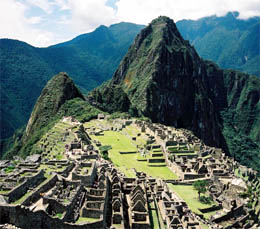
The Inca citadel Machu Picchu is at risk of being removed from the UNESCO list
 |
The minister primarily accused the mayor of La Convención and the proponent of the construction, Fedia Castro, of completely ignoring the law and not respecting court orders.
In July, when the project was announced, the court ordered its suspension because it violates the laws regarding protected areas and cultural heritage.
"If we lose the title 'World Heritage', we will cause immeasurable damage to our main tourist icon," emphasized Aráoz. She reminded that in February, UNESCO officials will come to Peru to examine the state of protection of the site.
Since January of this year, half a million tourists have visited Machu Picchu, three-quarters of whom came from abroad. And if it is proven that "it is not a protected heritage," we will lose "very important foreign currency."
Mayors of municipalities in the Cuzco department, where the unauthorized bridge is being constructed, have been negotiating with the National Cultural Institute (INC) since July, as they believe they are being prevented from the economic development they need.
The minister reminded that in October an agreement was reached on cooperation for the strategy of road, rail, and air development. The agreement also includes a heliport in the Santa Teresa area, which needs the most support, but on the side where no damage is caused to the historical site.
"Cultural heritage belongs to all Peruvians, and saving Machu Picchu does not stand against local or regional interests; rather, it is a 'supremacy', it is a paramount right, it is a super-interest," declared INC director Cecilia Bákula.
If Machu Picchu is removed from the UNESCO list, it means that "in the eyes of the world, Peru will appear as a country unable to preserve what has been declared as heritage". Once a country agrees that one of its monuments is declared a cultural or natural heritage of humanity, it also commits to its protection, added Bákula.
The high-altitude citadel was discovered by explorer Hiram Bingham less than a hundred years ago.
The English translation is powered by AI tool. Switch to Czech to view the original text source.
0 comments
add comment






